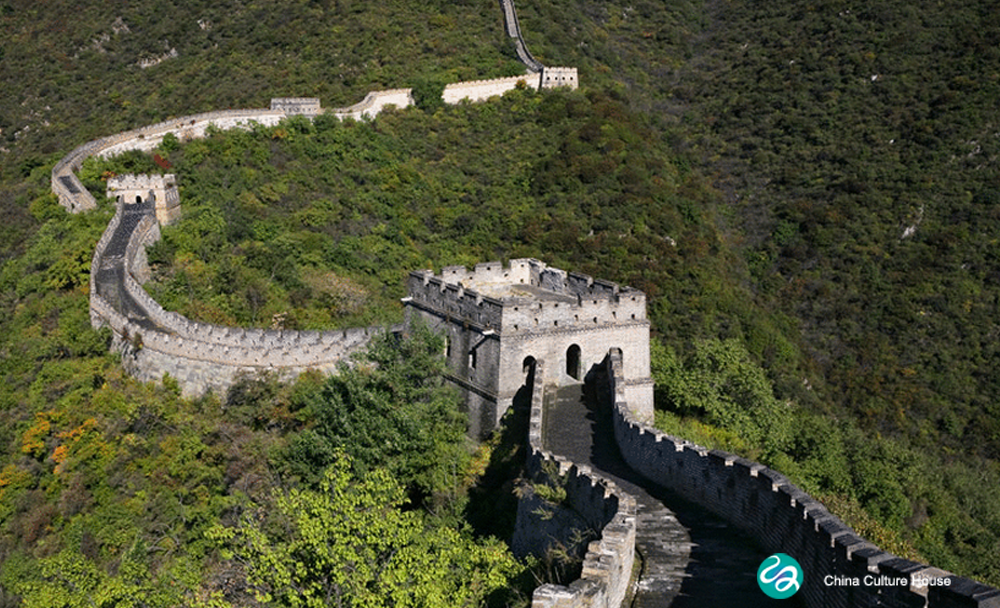GREAT WALL OF BEIJING
The Great Wall stretches thousands of miles from east to west, and its construction has lasted for more than 2,000 years since ancient times. Its magnificent style, aesthetic value, defensive function and military strategy are rare in the legacy of world culture. It is a great miracle around the world, because it is respected and admired by the people from each country.
—— The Mutianyu Great Wall
The Mutianyu Great Wall, located in Huairou District, is one of the 16 new scenic spots in Beijing. In western, Yongguan Great Wall is adjacent to Yongguan Great Wall, Gubeikou is connected to eastern, and the 2250-meters open section of the Great Wall is characterized by stacks on both sides.
The famous Landscapes including arrow buckles, ox horns, flying eagles and so on are located at the west end of the Great Wall in Mutianyu, which is considered to be the essential section and mountainously covered with over 90% vegetation. Mutianyu Great Wall provide the first-class cable car to help visitors to get on the top of this Chinese Dream Stone City, There are also other programs like Shibide slideway, which is also a part of the Great Wall culture, stone culture, belongs to a kind of sport and fitness entertainment as well.
In 1569 A.D. (Longqing Three Years), Qi Jiguang, an eminent General of Zhu Zaiyong in the Ming Dynasty, and governor of Yidu, known to the Premier Jizhen, Changzhen and Baoding, led the army to renovate the 2,000-mile Great Wall, including the Mutianyu section. The Great Wall, which was built in the autumn of Longqing five years and remains until 2013, has been preserved and restored by Mutianyu. People nowadays call it MingChangcheng”It is one of the best preserved sites in the ruins of the ancient city

The Mutianyu Great Wall(12张)
—— Badaling Great Wall
The Badaling Great Wall is located at the North mouth of Jundu Shanguangou ancient road, Yanqing District, Beijing. It is an important part of the Great Wall, a great defense project in ancient China, and a pass of the Great Wall of the Ming Dynasty. The Great Wall of Badaling is an important outpost of Juyong Pass, which was called "the danger of Juyong is not in the Pass but in Badaling".
The Badaling section of the Great Wall of the Ming Dynasty is called the "Yuguan Heavenly Graben", which is one of the eight sceneries of Juyongguan in the Ming Dynasty. Badaling Great Wall is the earliest part of the Great Wall opening to visitors. Badaling scenic area is dominated by Badaling Great Wall. Badaling Hotel and the Museum of the Great Wall of China, which is named by President Jiang Zemin, have been built.

Badaling Great Wall(8张)
1.The Great Wall is an ancient defense project that has been built for the longest time and costed the largest amount in the world. Since the seventh and eighth centuries B.C., it has been built continuously for more than 2000 years. It is distributed in the vast land of northern and central China. The total length is more than 50,000 kilometers. It is called "more than 2,000 years, more than 100,000 miles in length and breadth".
2. This huge construction is so unique not only in China but also in the world. It was listed with the Colosseum of Rome and the Leaning Tower of Pisa as one of the seven wonders of the Middle Ages.
3. The Great Wall stretches tens of thousands miles from east to west, that's why it is called the Great Wall. The existing remains of the Great Wall are mainly the Ming Great Wall, which was built in the 14th century, from Jiayuguan in the west to Hushan in the east of Liaoning Province. The total length of the Great Wall is 8851.8 kilometers, with an average height of 6 to 7 meters and a width of 4 to 5 meters. It is a great miracle created by the laboring people in ancient China and a proof of China's long history.
4.The Great Wall is a great military building in China, with a huge scale and praised as a miracle in the history of ancient human architecture. The Great Wall Belt, which is composed of the Walls from vast northern to southern regions and mediated by the Great Wall in Xiongshi, runs through a considerable part of Liaoning, Inner Mongolia, Ningxia, Gansu, Shaanxi, Shanxi, Henan, Hebei, Beijing, Tianjin, Shandong and Jilin. Heilongjiang, Qinghai and Xinjiang provinces (cities, autonomous regions) is also included. In the historical period, there are also some areas in the present Mongolian People's Republic and Korean Peninsula in covered.






